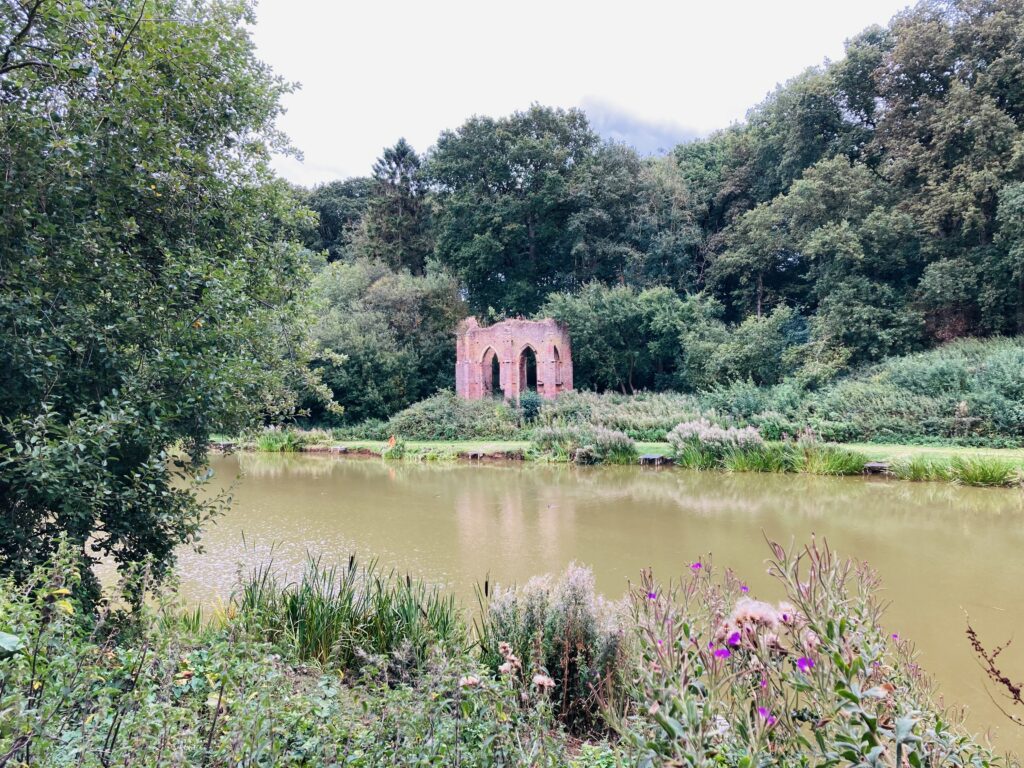Our purposeless structures correspondent Angus Young uses a ‘research’ trip to Risby as an excuse to eat cake. Typical.

We love our architectural follies here at Curiosity but we have to admit there aren’t that many in Hull. The cupola from the old Town Hall standing on a raised mound of earth in Pearson Park probably qualifies as the best example as does the Wilberforce Monument. You could, perhaps, argue the wave-like glazed roof above St. Stephen’s is a more modern contender but beyond that it’s a bit of a struggle.
However, decorative landmarks of varying quirkiness abound in the East Riding, from Withernsea’s Pier Towers to Sledmere’s Tuscan-style Rotunda which was built in 1840 by Sir Tatton Sykes in memory of his father Christopher. As you do. We’ve already featured Ellerker’s unusual Sebastopol stone, said to have been built using spare ballast from ships carrying weapons and troops to the Crimean War while Londesborough Hall also features an odd terraced wall. This one was built in 1670 and is peppered with arched alcoves believed to have been designed as shelters for local deer.
But our favourite folly lies next to a man-made lake once part of a now deserted village just a few miles from Hull where deer also roamed in large numbers. Once home to the ultra-rich Ellerker family, Risby Hall stood at the centre of the Risby Estate for five centuries. The estate featured farms, extensive woodland, a deer park and ornamental gardens.
In 1760 Eaton Mainwaring Ellerker embarked on a radical re-design of the formal gardens with the aim of creating a more ‘naturalistic’ landscaped park. Among his innovations was the creation of a large fashionable serpentine lake in a valley to the south-east of the new park. Naturally enough, he decided to add his own folly on the side of the lake. Ellerker wanted to build a Grecian-style temple with commanding views across his new lake but he died before it could be built. His son and heir Roger died four years later with work on the folly yet to start.

Eventually, the design was changed and a pseudo-Medieval Georgian Gothic octagonal brick structure was built instead. Seven of the eight sides featured tall shuttered, partially-glazed window openings while the interior featured a fireplace, a series of curious wall recesses on either side of each window and elaborate wooden panelling, plasterwork and painting. An original spire is believed to have collapsed soon after the folly was completed, creating the ruinous look which still can be seen today.
The building probably had several uses. As well as simply being a visual attraction, it was also likely a welcome resting point for visitors walking around the estate. The fireplace and the possible storage recesses suggest it was also used to entertain for longer periods, possibly hosting small banquets and fishing parties.
Today the landmark still stands overlooking the lake which is now a privately-run fishing pond. Because access around the lake is restricted to anglers, there’s an air of mystery about it. Even so, the distant views are made all the more enjoyable by the presence of the aptly-named Folly Cafe on the opposite side of the lake. The coffee and cakes are highly recommended.
